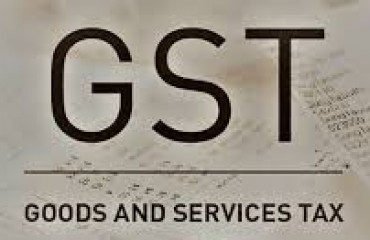
Today, 1 July 2022, marks five years since India’s introduction of the goods and services tax (GST). I have tracked the passage of the GST from its rocky start, with a matching voucher requirement too demanding for a shaky portal to handle, and fearsome penalties for not submitting forms by the stipulated deadlines.
Today, 1 July 2022, marks five years since India's introduction of the goods and services tax (GST). I have tracked the passage of the GST from its rocky start, with a matching voucher requirement too demanding for a shaky portal to handle, and fearsome penalties for not submitting forms by the stipulated deadlines. Those procedures were luckily simplified four months later. But the initial mistakes made the tax unpopular, and in a bid to counter that, a set of ham-handed reductions in rates was introduced, which brought down revenue collections and did nothing to correct the principal problem, which was the ill-conceived principle on which rates were fixed.
Time now to step back and look at the big picture. The good news is that after five years, the GST has shown impressive staying power and resilience, right through the pandemic years. The true test of the GST is not so much its revenue performance, which has been reasonable if not spectacular, but its gradual evolution into widespread acceptance.
The second good feature is that, contrary to media hype, the GST has strengthened the Indian federation by enabling seamless input tax credit even when supply chains cross state borders. The narrative that it has weakened the federation by imposing an authoritarian Centre on the fiscal freedom earlier enjoyed by states has largely resulted from the GST compensation issue, even though that was eventually resolved to the satisfaction of states by the Centre taking on special borrowing to fund the compensation due.
At the 47th GST Council meeting just concluded on 29 June, several states are reported to have urged extension of the compensation guarantee beyond its initial five-year life. The guarantee of a 14% annual increase in GST revenue to all states was unwarranted in the first place, given that a mere five states had experienced annual revenue increase at 14% or above (in taxes subsumed by the GST) in the preceding five years (Rajaraman and Gupta, EPW, 28 November 2020). The paper argues that the compensation should have been differently calibrated to tax buoyancy, rather than in the form of a flat top-up to 14% revenue growth for all.
In the best tradition of interim provisions, the sunset date of GST compensation was known right from the start. Some states might well be facing a looming fiscal disaster today, but poor management of power sector reform has a lot to do with it. I tracked parliamentary questions on the GST during the term of the Sixteenth Lok Sabha ending in May 2019. The questions asked displayed a move towards concern over the revenue issue common to both the Centre and states, away from the initial adversarial questioning of the GST design and processes.
Nevertheless, there is clearly a sense among some if not all states that they lack a voice. The latest meeting of the GST Council displays a refreshing change from earlier meetings, in having had a systematic discussion on reports on specific subjects prepared by groups of ministers. The longer duration of the meeting might also have given more opportunities for dissenting voices to be heard.
But there is indeed a severe downside to the GST, which has to do with transactions between two entities on opposite sides of the GST registration turnover threshold. Like any standard indirect tax, the GST is levied on the buyer but collected and transmitted by the seller, on the general presumption that many buyers map onto any one seller. But in India, where there was a thriving ecosystem of small industry supplying inputs to formal manufacturing units, many small sellers mapped on to a single large buyer. The Central GST Act therefore provided for a reverse charge mechanism (RCM) to be paid by the (registered) large buyer, and at no loss, since input tax credit could legitimately be claimed against the tax paid. This excellent provision was withheld by notification, and later made applicable only to one or two notified sectors.
This has caused untold damage to unregistered units that could not supply the vouchers needed to support input tax credit claims by the buyer. Many of them chose to remain unregistered even if they were above the turnover threshold, in order to avoid the onerous GST reporting requirements. They went out of business. This has had a devastating impact on the growth trajectory of the Indian economy since 2017, worse than even the damage inflicted by covid. The damage can be reversed with a stroke of the pen, since a provision for the RCM already exists in the law.
The paradox is that the state-level value added tax (VAT), introduced by 2005 in most states, encouraged the explosion of small-scale units, since it ended the incentive in the earlier tax structure for manufacturers to vertically integrate into within-company production, so as to save sales tax on input purchases from external vendors even within the state. That was an important factor underpinning the broad-based growth spurt after 2005.
Restoration of the RCM will entice back small-scale entrepreneurs, and will eventually even incentivize them to register in order to avail of input tax credit themselves. In that hope, here is wishing the GST many happy returns.
